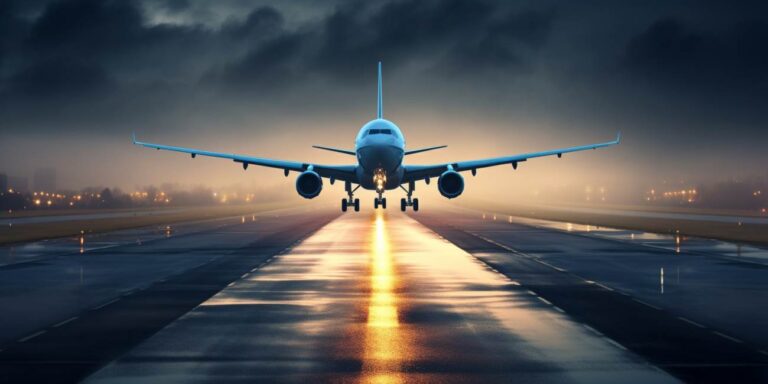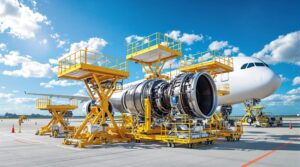When it comes to long-haul travel, the Boeing 777 stands out as a prominent choice. Renowned for its fuel efficiency and remarkable range, the Boeing 777 has become a staple for transcontinental journeys. Its twin-engine design, advanced aerodynamics, and spacious interiors contribute to a comfortable experience for passengers.
Another notable contender in the long-haul category is the Airbus A350. This modern marvel incorporates cutting-edge technology, including lightweight materials and efficient engines, ensuring both environmental sustainability and cost-effectiveness. The A350 prioritizes passenger well-being with advanced air filtration systems and quieter engines.
For airlines focusing on sheer passenger capacity, the Airbus A380 takes the lead. With its distinctive double-deck design, the A380 can accommodate a large number of passengers, making it an ideal choice for high-demand routes. However, its fuel efficiency may be a concern, particularly as the industry shifts towards more environmentally friendly practices.
While Boeing and Airbus dominate the long-haul market, it’s essential to mention the Boeing 787 Dreamliner. This aircraft combines fuel efficiency with technological innovation, featuring large windows, spacious cabins, and composite materials for reduced weight. These factors contribute to a more sustainable and cost-effective long-haul operation.
It’s crucial to note that the best choice for long-haul flights depends on various factors, including the airline’s specific requirements, route characteristics, and environmental considerations. Airlines may opt for a balance between passenger capacity, fuel efficiency, and overall operational costs to find the most suitable aircraft for their long-haul endeavors.
| Aircraft | Key Features |
|---|---|
| Boeing 777 | Fuel efficiency, impressive range, twin-engine design |
| Airbus A350 | Modern technology, lightweight materials, passenger well-being |
| Airbus A380 | High passenger capacity, double-deck design |
| Boeing 787 Dreamliner | Fuel efficiency, technological innovation, spacious cabins |
How to choose between airbus and boeing for long range flights
When deciding between Airbus and Boeing for long-range flights, several factors come into play. Both manufacturers offer a range of aircraft designed to cover extensive distances, but airlines must carefully consider their specific needs, operational requirements, and the unique features each company brings to the table.
Range is a crucial consideration for long-haul flights. Airbus and Boeing each have flagship models that excel in this aspect. Airbus A350 XWB and Boeing 777X, for instance, boast impressive long-range capabilities, making them suitable for non-stop flights over vast distances. Operators should evaluate the exact flight routes they plan to cover and the payload capacity required.
Another critical factor is fuel efficiency, which directly impacts operational costs. Airbus A350 stands out for its innovative design and advanced materials, contributing to lower fuel consumption. On the other hand, Boeing 787 Dreamliner incorporates similar features, emphasizing fuel efficiency as a key selling point. Airlines keen on minimizing fuel expenses should carefully compare the fuel efficiency of these models.
Cabin comfort is a paramount consideration, especially for long-range flights where passengers spend extended periods onboard. Both Airbus and Boeing prioritize passenger experience, offering spacious cabins, large windows, and advanced entertainment systems. However, Airbus A380 stands out with its iconic double-deck design, providing airlines with an opportunity to create luxurious and comfortable premium cabins.
When evaluating operational flexibility, airlines should analyze the commonality of aircraft within their fleets. Opting for aircraft from the same manufacturer can simplify training and maintenance processes. Airlines operating a significant number of Boeing aircraft may find it more convenient to stick with the brand for long-range flights, and the same applies to those with a predominant Airbus fleet.
Cost considerations play a crucial role in the decision-making process. While the initial purchase price is a significant factor, life-cycle costs and resale values should also be taken into account. Airlines need to assess the overall economic viability of the aircraft, factoring in maintenance expenses, fuel efficiency, and potential revenue generation through passenger capacity.
Most spacious aircraft cabins for extra comfort on lengthy trips
Embarking on a lengthy journey is an adventure, but comfort becomes paramount, especially when it comes to air travel. The quest for the most spacious aircraft cabins has become a priority for discerning travelers, particularly those seeking extra comfort during extended trips. Airlines recognize the significance of providing an indulgent experience, especially in first class and business class cabins, where passengers expect the epitome of luxury.
One of the crucial elements contributing to superior comfort is the seat pitch. This measurement, representing the distance between seat rows, directly influences legroom. A generous seat pitch ensures that passengers have ample space to stretch their legs, reducing the discomfort associated with prolonged periods of sitting. Airlines that prioritize passenger well-being often boast impressive seat pitch in their premium cabins.
When it comes to legroom, the focus extends beyond just the seat pitch. Airlines investing in providing unparalleled comfort ensure that the entirety of the cabin is optimized for spaciousness. The layout and arrangement of seats play a crucial role in maximizing legroom, creating an environment where passengers feel unrestricted, even on the longest journeys.
However, comfort goes beyond mere space. Amenities in premium cabins elevate the travel experience to new heights. From plush blankets and noise-canceling headphones to gourmet dining options, airlines understand the importance of pampering their first and business class passengers. These amenities contribute to an overall sense of luxury and well-being throughout the journey.
Equally important is the cabin interior design. Airlines invest in creating aesthetically pleasing and functional cabin spaces. The interior design not only reflects the airline’s brand and identity but also plays a vital role in enhancing the overall ambiance of the cabin. From sophisticated color palettes to thoughtfully designed lighting, every detail contributes to the creation of a serene and inviting atmosphere.
In the world of premium air travel, the pursuit of the most spacious aircraft cabins is an ongoing endeavor. Airlines vie with each other to offer passengers an oasis of comfort, where the first class and business class experience goes beyond a seat and becomes a journey in itself. The synergy of ample seat pitch, expansive legroom, lavish amenities, and thoughtfully curated cabin interior design defines the pinnacle of comfort for those embarking on lengthy adventures through the skies.
Comparing the largest wide-body aircraft for ultra long haul routes
The aviation industry is marked by fierce competition among giants, each vying for supremacy in the realm of ultra-long-haul travel. When it comes to wide-body aircraft, the A380, 747, Dreamliner, and Triple Seven stand out as titans capable of crossing vast distances. Let’s delve into the intricacies of these airborne leviathans, examining their range, payload capacity, and wingspan to decipher which reigns supreme in the demanding world of extended journeys.
The A380, produced by Airbus, is a marvel in the skies. Its sheer size is awe-inspiring, and so is its impressive wingspan of approximately 79.75 meters. This expansive wingspan not only contributes to its stability but also enables it to cover vast distances efficiently. When it comes to range, the A380 boasts an impressive capability, making it a preferred choice for airlines operating ultra-long-haul routes. Its expansive fuselage allows for a generous payload capacity, making it an ideal choice for airlines catering to high-demand routes with large passenger volumes.
Boeing’s 747, often referred to as the “Queen of the Skies,” is another heavyweight contender. While its wingspan is slightly smaller than the A380, standing at around 68.4 meters, it compensates with a storied legacy and an impressive range. The 747 has been a symbol of long-haul travel for decades, with its iconic hump distinguishing it in the skies. Its payload capacity is noteworthy, making it a versatile choice for airlines seeking a balance between capacity and range.
The Dreamliner, officially known as the Boeing 787, takes a different approach. While its wingspan is notably smaller, around 60.1 meters, it excels in fuel efficiency and cutting-edge technology. The Dreamliner’s composite materials contribute to its lightweight design, enhancing its range capabilities. Although its payload capacity may not match that of the A380 or 747, its efficiency and modern features make it an attractive option for airlines prioritizing sustainability and passenger experience.
Enter the Triple Seven, or Boeing 777, a workhorse renowned for its reliability and performance. With a wingspan comparable to the 747, around 64.8 meters, the Triple Seven showcases an impressive balance between capacity and range. Its twin-engine design contributes to fuel efficiency, and it remains a popular choice for ultra-long-haul routes. The payload capacity of the Triple Seven is commendable, making it a stalwart choice for airlines seeking a versatile wide-body aircraft.






